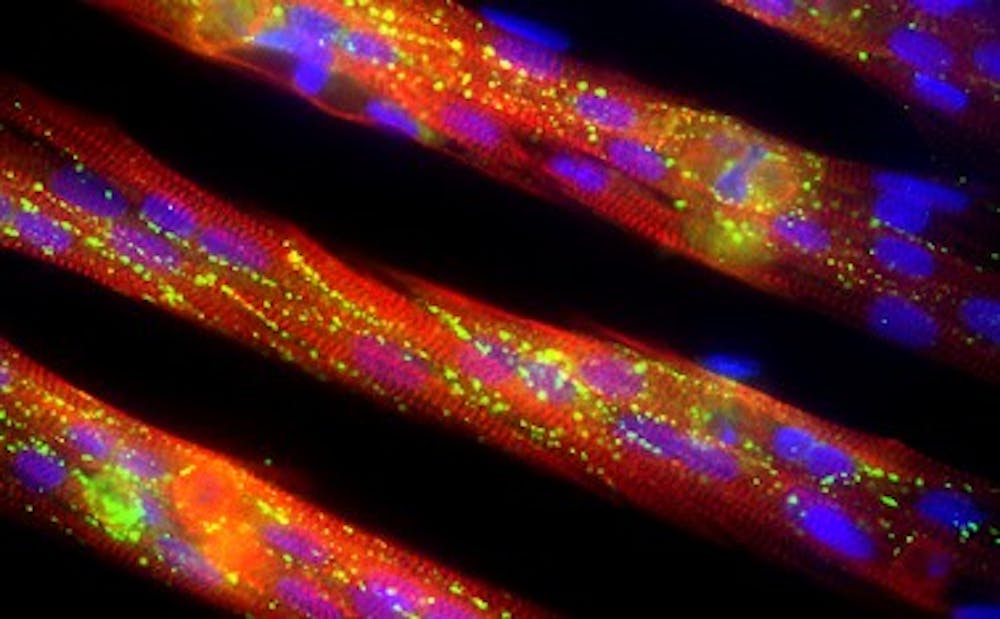While some people may hit the gym to strengthen their muscles, Duke researchers have been in the lab strengthening their artificial muscles.
In 2016, the Bursac Lab at Duke successfully 3D printed muscle tissue and made it contract like native muscle—a first in the field of bioengineering. However, these tissue-engineered muscles were predicted to be about 10 to 50 times weaker than natural muscle.
Now, the lab has found a way to make these muscles stronger than ever before.
Alastair Khodabukus, a researcher at the Bursac Lab and a key contributor to this new research, said that in the human body, normal muscles contract due to electrical impulses delivered from nerves.
“Normally your muscles will contract when you go to the gym and do a bicep curl," he said. "The brain is sending the muscles that contract a neural input."
However, bioengineered muscles do not have any sort of nerves feeding into them and thus cannot contract like real muscles. To solve this issue, the researchers decided to electrically stimulate the muscles in order to mimic the activity of real nerves.
“The rationale for doing the electrical stimulation was, ‘Can we basically get the muscles to exercise and be stronger?' and that’s what we ended up showing,’” Khodabukus said.
Following the electrical stimulation, the researchers found that both the size and strength of the engineered muscles increased.
It took three years to fully collect the requisite data for this model.
Chris Jackman, a postdoctoral associate at the Bursac Lab, designed a chamber in which two electrodes were attached to a muscle. The researchers could then electrically stimulate the muscle for as long as they wanted to in order to elucidate the conditions most conducive to muscle growth. However, the challenge came in determining a frequency that would maximize growth.
“If we applied too much electrical current to muscle, we could actually kill the muscle that way," Khodabukus said. "It’s the same as being electrocuted.”
After adjusting the frequencies in the stimulation, the Bursac Lab was able to find a high enough frequency that would not damage the muscle, making it the most conducive setting.
While these muscles are neither as strong as nor developmentally as mature as natural human muscle, they represent a great leap forward in the field of bioengineering.
In fact, the Bursac Lab holds the record for the highest specific force reported for engineered human muscles to date.
The fully functional muscle model provides an invaluable tool in testing drugs and treatments.
The muscles are capable of modeling diseases, which could further the development therapeutic treatment, Khodabukus said. However, since the muscles are not very strong or mature, they are not perfectly representative of the behavior of real muscles.
This limitation sets the direction for the lab’s future work.
"With long-term electrical stimulation, we might be able to get bigger, stronger, more mature muscle, which could potentially lead to a more predictive in vitro model for identifying efficiency of different drugs," he said.
Get The Chronicle straight to your inbox
Signup for our weekly newsletter. Cancel at any time.

